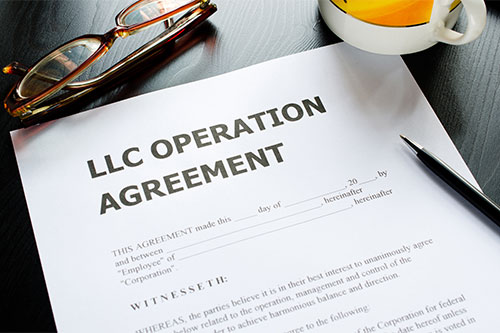LLC Tax Filing Requirements – Corporation or Partnership
Before getting into LLC tax filing requirements, just what is a Limited Liability Company? According to the IRS: “A Limited Liability Company (LLC) is a business structure allowed by state statute. Each state may use different regulations, you should check with your state if you are interested in starting a Limited Liability Company. Owners of an LLC are called members. Most states do not restrict ownership, so members may include individuals, corporations, other LLCs and foreign entities. There is no maximum number of members. Most states also permit “single-member” LLCs, those having only one owneri.”
The ability to structure the LLC as either a corporation or a partnership provides flexibility for businesses to receive liability protection and tax advantages suitable for their ownership requirements. At the most basic level, there are two classifications of LLCs with LLC tax filing requirements based on one or more members:
- The LLC with only one member is considered an entity not separate from its owner unless the owner files IRS Form 8832 to be considered a corporation.
- The LLC with two or more members is automatically considered a partnership by the IRS unless Form 8832 is filed.
The partnership form of the LLC is a pass-through entity. This means that the income from the business passes through to the members for reporting on their personal income tax returns.
The Corporate Form – LLC Tax Filing Requirementsii
There is a list of rules that are used in the classification of a business entity as a corporation, including:
- The business entity is filed by the federal or a state government or a recognized Indian tribe and filed as a corporation.
- Under Regulations section 301.7701-3, an association can file the LLC as a corporation.
- The LLC can be considered a corporation id formed under a Federal or State statute that refers to the entity as a joint stock association.
- If a state-chartered banding business entity and any of its deposits are insured by the FDID, the LLC is classified as a corporation.
- A business wholly owned by a state or political subdivision of a state is classified as a corporation.
Though that list indicates what conditions can cause a business to be classified as a corporation, the LLC is always a partnership unless it files for corporate status with Form 8832.
Filing
LLC tax filing requirements for the partnership entity are the same as for a regular partnership. Taxes would be filed with Form 1065, U.S. Return of Partnership Income. Each partner would then file a Schedule K-1 with their personal returns that sets out their partner share of income, credits, and deductions. In most cases, each partner would also pay self-employment taxes on their share of income.
If the LLC is a corporation, it would file a Form 1120, U.S. Corporation Income Tax Return. There is no pass-through of income, credits, or deductions to the members.
LLC tax filing requirements are not overly complicated if the proper entity type, partnership, or corporation, is elected and the proper forms are used, but consulting with Taxhive.com experts can get things right for your business.
i Limited Liability Company (LLC) – IRS.gov
ii LLC Filing as a Corporation or Partnership – IRS.gov

